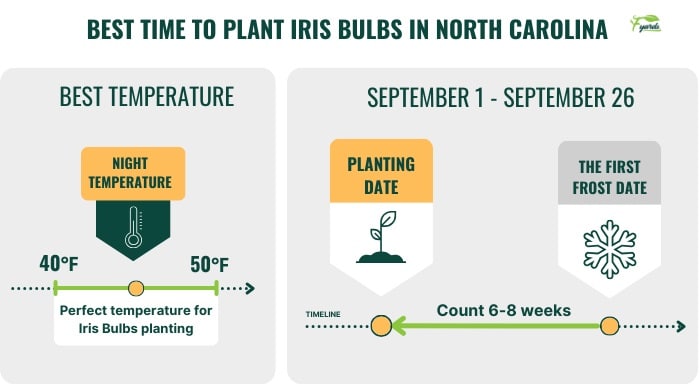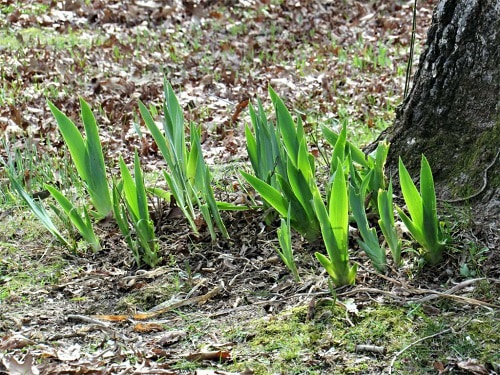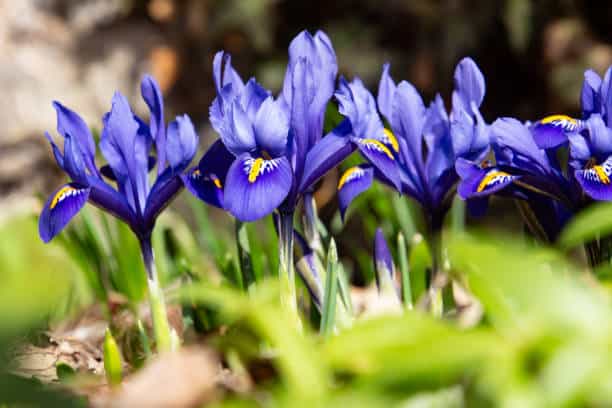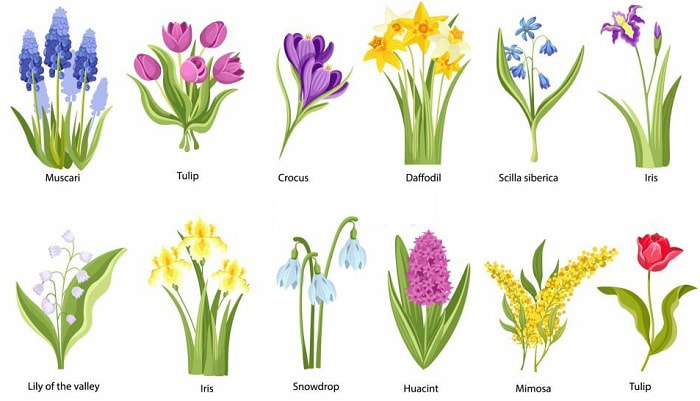When to plant iris bulbs in North Carolina? The times vary depending on which hardiness zone you live in. For reference, fall is the universal planting season for all of NC’s four zones and can be as early as September 1 until September 26.
While iris bulbs are some of the more popular perennials out there with their ability to withstand low temperatures, you want to minimize frost damage. Learn more helpful tips like this below.
Table of Contents
Best Time to Plant Iris Bulbs in North Carolina
When is it too late to plant iris bulbs in NC? Before we answer that, it’s vital to determine first which hardiness zone you’re in. Use this chart for reference on NC’s four zones:
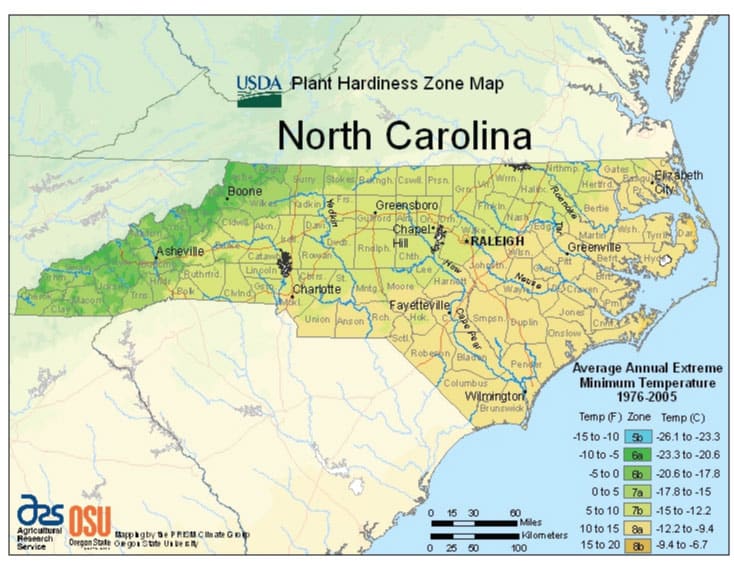
- 5b
- 6a
- 6b
- 7a
- 7b
- 8a
- 8b
While each region can have different planting calendars, to avoid confusion and as a general rule, iris bulbs are best planted in the fall season in North Carolina. Plant them 6-8 weeks before the first fall frost or during night temperatures of 40-50 ℉, specifically on:
| Zone 5 | September 1 |
| Zone 6 | September 5 |
| Zone 7 | September 17 |
| Zone 8 | September 26 |
Tips for Successful Iris Bulb Cultivation in North Carolina
1. Choosing A Site
When looking for a place to plant iris, your site should have the following conditions:
- You want your soil to be fertile and well-draining to avoid bulb rot.
- The pH levels should range from neutral to slightly acidic, specifically 5-6.8 in sandy, loamy, or even clay soil types.
- Irises can still thrive in clay soils, provided the planting site is well-amended by organic matter.
- For sun requirements, you want your irises to be fully exposed to sunlight for 6-8 hours each day.
- If you live in a region where sunlight is sparse, or your site is shaded, the most time irises can tolerate going without sun is half a day. Even this is not ideal, so make sure your site is not shaded by other towering plants to have the best blooms.
2. Planting
- First, dig a hole with the following dimensions: 10 inches in diameter with a 4-inch depth.
- Place the bulb in the hole with the points facing upward and spread out the roots on both sides.
- You can plant them individually or in groups of three with 12-24 inches spacing in between. You want to ensure there’s adequate space for the blooms to grow and spread.
While not the common method most gardeners take, you can still plant iris bulbs in pots so long as the container is big enough to accommodate the root systems.
- While taller iris variants can be grown in containers with proper support like stakes, the dwarf iris is a more suitable choice for its size.
3. Caring
- Irises need 1 inch of water every week and while you should make sure to water thoroughly, make sure the soil is dry enough in between waterings to avoid waterlogging.
- While mulching is helpful to combat weeds and improve soil conditions, just make sure not to mulch close to the rhizomes since this can lead to rot.
- It’s common for iris flower beds to grow to be overcrowded. To avoid this, you can divide your irises 3-5 years after planting bulbs. The process involves trimming down the leaves to about ⅓ of their length.
4. Harvesting
- Iris flower season for blooming is typically one year after planting, but only 60-75% can bloom after just a year.
- Irises are harvested when they’re already in the “pencil tip” stage or when the colors start to show, and by then, you can leave them to open indoors.
5. Iris Bulb Varieties
While a bearded iris garden is more common, this is the full list of iris varieties well-suited for North Carolina’s climate, such as:
- Aril
- Bearded
- Crested
- Dwarf
- Dutch
- German
- Japanese
- Louisiana
- Siberian
- Spuria
Conclusion
Now you know that autumn is the universally best season for when to plant iris bulbs in North Carolina. You should also have learned the importance of timing for both planting and harvesting irises.
Whether this is your first time planting these perennials or you’re a veteran gardener with years of experience, it’s crucial to adjust your methods to your location’s specific conditions. This guide is not foolproof, but it should help you navigate most situations.
With all that in mind, you’re now well on your way to a garden filled with beautiful colors reminiscent of the rainbow.

Hi, I am William – Floridayards’ digital content creator. My job is to find answers to all your concerns with thorough research and our team’s expert advice. I will also bring you honest reviews on the best products and equipment for raising your beautiful garden. Please look forward to our work!



